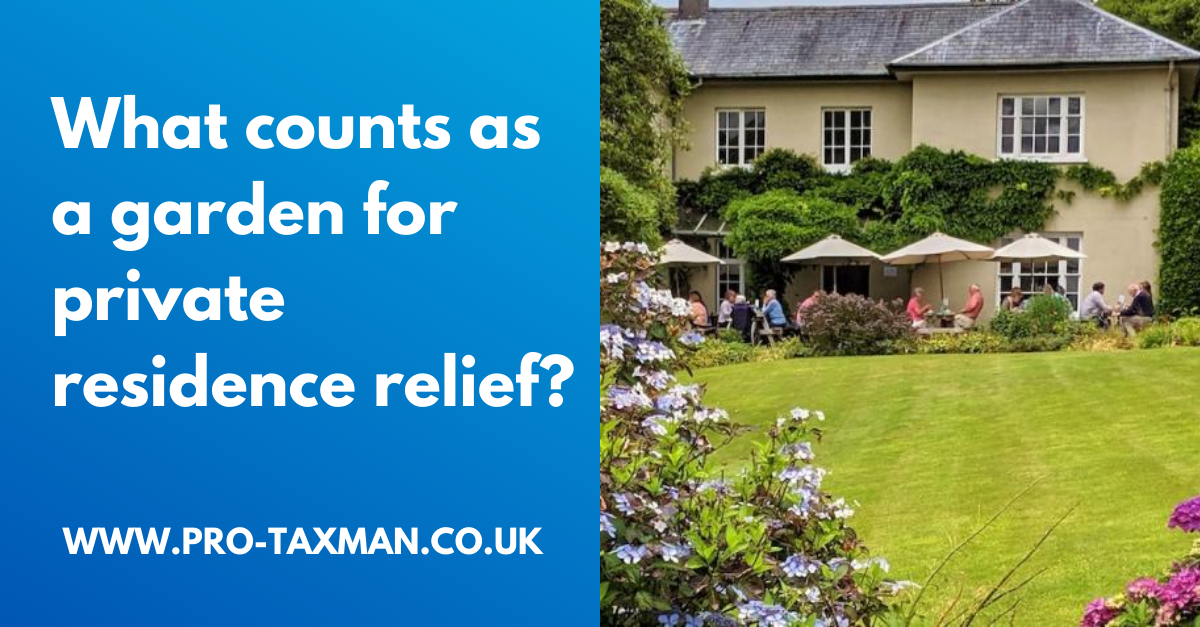Private residence relief prevents a tax charge from arising if there is a capital gain when a person sells a property that has been their only or main home throughout the period that they have owned it. Where the property has been the only or main home for some but not all of the period of ownership, the relief shelters the gain pertaining to the period that the property was occupied as the only or main home, and also the final nine months of ownership (36 months when owner moves into care). In most cases, the garden will fall within the scope of the relief, and separate consideration is not needed. However, where the grounds are particularly extensive problems may arise and it is certainly not a given that they will be covered by the relief. Permitted garden Under the terms of the legislation, land or a garden that has been ‘enjoyed with the property’ will fall with the scope of the relief where the size of the garden does not exceed the ‘permitted area’. The legislation defines the ‘permitted area’ as an area of 0.5 of a hectare (1.23 acres) including the land occupied by the dwelling house. Thus where the garden and grounds are not more than 0.5 of a hectare, as long as the conditions for the relief are met, the whole area automatically qualifies for relief. However, the land must comprise the gardens and grounds of the residence – land which does not form the garden and grounds does not qualify for the relief, even of the total amount of land disposed of with the residence is not more than half a hectare. The test is house and garden up to 0.5 hectares, not the first 0.5 hectares of land.
More land? If the grounds are more than 0.5 hectares, all is not necessarily lost. A larger area may be allowed within the scope of the relief where this is considered necessary ‘for the reasonable enjoyment of the property’. In determining whether this test is met, HMRC will take account of:
the size and character of the dwelling house;
the part of the dwelling house that has been used as the owner’s residence;
and
the amount of land that is required for the reasonable enjoyment of the
residence.
Urban gardens are smaller than those of homes in rural areas and what might be reasonable for a rural property may be regarded large for a property of the same size in an urban setting.
Multiple disposals
Problems can also arise if some of the garden is sold separately from the house. Care should be taken when selling some of the land separately and retaining the dwelling as HMRC may argue that the land that was sold was not required for the reasonable enjoyment of the property. This argument could be countered where the sale was for financial reasons or where the disposal was within the family. Land sold after the disposal of the residence will not qualify for main residence relief as at the date of disposal the land is not held with the residence as its garden or grounds – the test applies at the date of disposal rather than over the period of ownership as a whole.
Need professional accounting service or accounting advice? Contact us to book a 15-min Free Consultation with us today.
To find out more please follow us on Facebook, Twitter, or LinkedIn. Feel free to contact us on 0333 006 4847 or request a call back by texting 075 6464 7474

